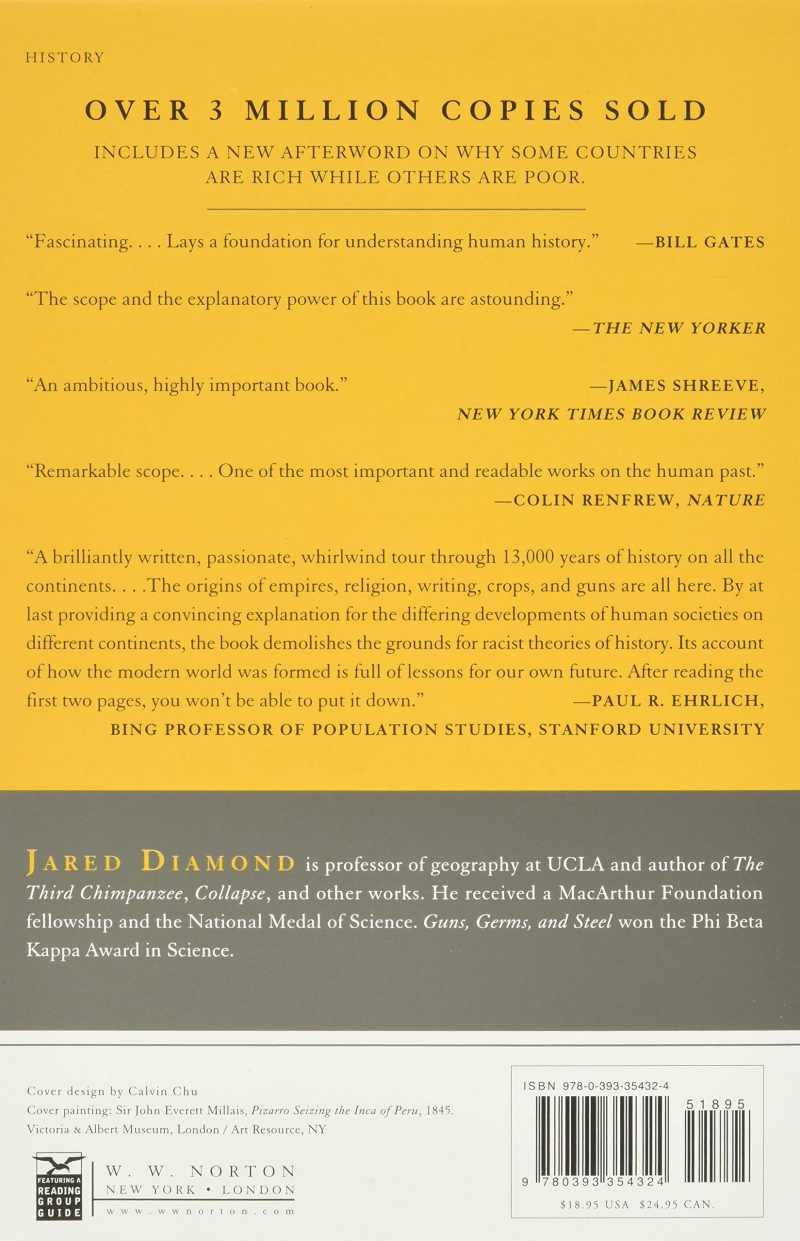Guns, Germs, and Steel
Jared Diamond is a UCLA geography professor and the best-selling author of Collapse and The Third Chimpanzee. He is a MacArthur Fellow and a National Medal of Science recipient.
Why didn't Eurasians conquer, displace, or decimate Native Americans, Australians, and Africans? In this "artful, insightful, and fascinating" (William H. McNeill, New York Review of Books) book, evolutionary biologist Jared Diamond deconstructs racist interpretations of human history by exposing the environmental causes that are actually responsible for its biggest patterns.
The story begins 13,000 years ago, when the whole human population was made up of Stone Age hunter-gatherers. Around that time, the evolutionary paths of human societies on various continents began to diverge dramatically. Early domestication of wild plants and animals in the Fertile Crescent, China, Mesoamerica, the Andes, and other areas provided a head start for the peoples of those countries. However, the limited origins of farming and herding were only part of the explanation for their disparate destinies. Other aspects of climate and geology, such as the various sizes, positions, and even shapes of the continents, influenced the unequal rates at which food production spread from those original hubs. Only communities that progressed beyond the hunter-gatherer stage developed writing, technology, administration, and structured religions, as well as lethal viruses and powerful weapons of war. It was those societies that invaded others by water and land, decimating original inhabitants through slaughter and disease spread.
Guns, Germs, and Steel is a seminal work in our knowledge of human societies, chronicling the birth of the modern world and its disparities. The book is among the best books on cultural history.
Author: Jared Diamond Ph.D.
Link to buy: https://www.amazon.com/Guns-Germs-Steel-Fates-Societies/dp/0393354326/
Ratings: 4.5 out of 5 stars (from 8291 reviews)
Best Sellers Rank: #3,043 in Books
#2 in Crop Science (Books)
#3 in Human Geography (Books)
#3 in General Anthropology

















